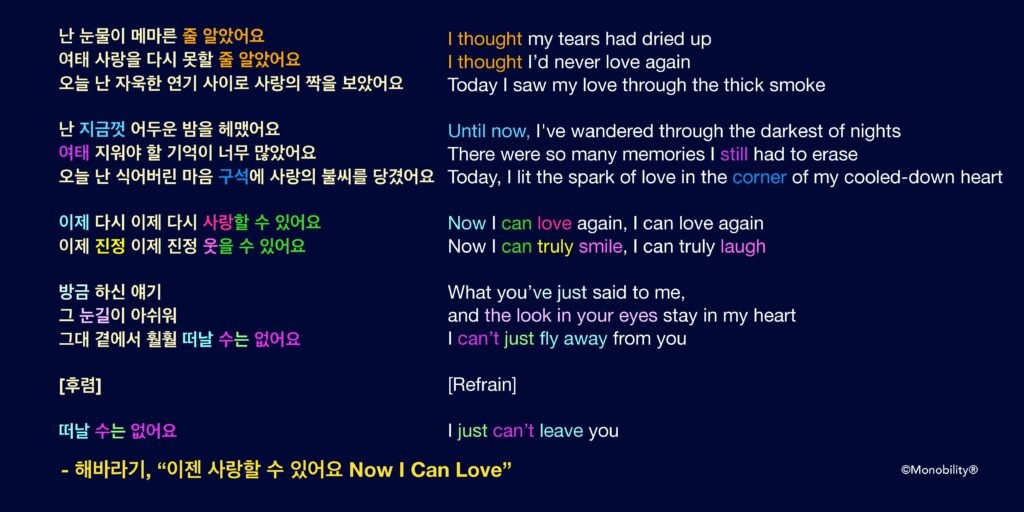For about 5000 years, Koreans went through all kinds of unusual and strange historical events. Naturally, ordinary Koreans grew up to keep calm and carry on in any situation, and Korean society particularly values the spirit of overcoming unforeseen hurdles or unexpected setbacks. If you happened to be in dire situations, you would speak to yourself a certain phrase, or a “mantra,” to encourage yourself to surmount the hurdles, aside from praying. “할 수 있다” is one of those typical Korean mantras that are uttered almost by instinct to boost teamwork (or individual determination) in desperate situations. “할 수 있다” means literally, “I/We/You can do it.”
Now you can guess how to say “can” or “be able to” or “be allowed to” in Korean. First, find the verb stem of the infinitive verb form. Then,
1. If the verb stem ends with a vowel, say “ㄹ 수 있다” after the verb stem:
- 하다 to do => 하 + ㄹ 수 있다 => 할 수 있다 I can do it
- 사랑하다 to love => 사랑하 + ㄹ 수 있다 => 사랑할 수 있다 I can love
2. If the verb stem ends with a consonant, say “을 수 있다” after the verb stem:
- 먹다 to eat => 먹 + 을 수 있다 => 먹을 수 있다 I can eat
- 잡다 to catch => 잡 + 을 수 있다 => 잡을 수 있다 I can catch
It is equally easy to say “can not” in Korean. You only have to replace 있다 with 없다:
- 할 수 없다 I can’t do it
- 잡을 수 없다 I can’t catch
- 잘 수 없다 I can’t sleep
The following video is my tribute to the recent Korean “reality” show Queen Bee Game, which I binge-watched all ten episodes last week. Along with the haunting lyrics from the famous old song “이제 사랑할 수 있어요” by 해바라기, you can practice the Korean mantra “We/I/You can do it,” with its historically proven effect, or learn how to say “can” and “can not” in Korean.
At 1:55, what does the song say in Korean, meaning “I can laugh/smile”? Use your dictionary and conjugate the verb.

Monobility® Group



